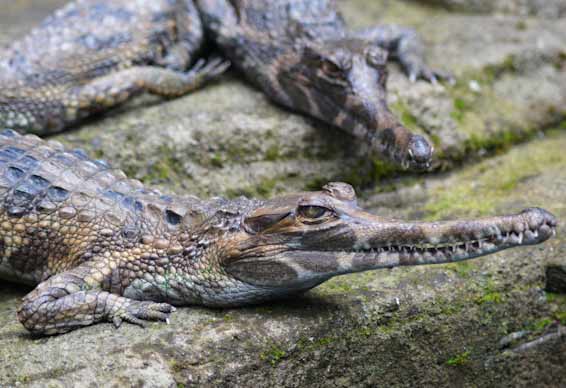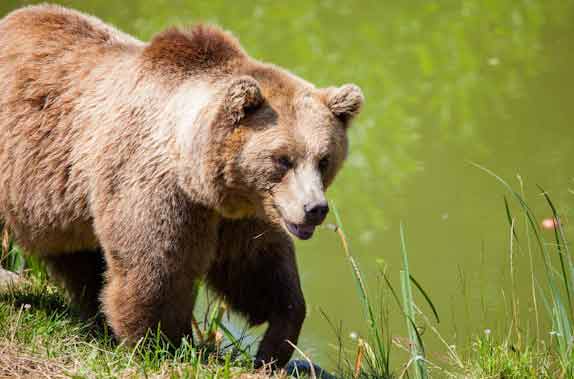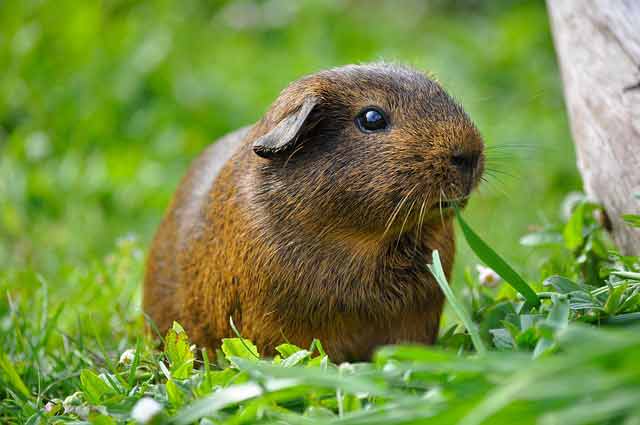Welcome to our journey through the animal kingdom, where we delve into the fascinating world of “animals that start with g”. From the ocean’s depths to the vast landscapes, we’ll discover the wonders of Galapagos Sharks, Gaboon Vipers, and Galapagos Tortoises, among others. Join us as we uncover their unique characteristics, remarkable habitats, and fascinating facts. Get ready to be amazed by the incredible diversity and marvels of nature showcased in these incredible animals that start with G. Let’s embark on this captivating adventure and explore these fascinating creatures.
Description of 26 animals that start with g
Galapagos Shark:

Kingdom: Animalia
Phylum: Chordata
Class: Chondrichthyes
Order: Carcharhiniformes
Family: Carcharhinidae
Genus: Carcharhinus
Scientific Name: Carcharhinus galapagensis
Fun Fact: Known for its tolerance to low oxygen levels.
The Galapagos Shark is a species of requiem shark found in the tropical waters of the Galapagos Islands. It has adapted to survive in low-oxygen environments and is known for its distinct black-tipped fins.
Gaboon Viper:

Kingdom: Animalia
Phylum: Chordata
Class: Reptilia
Order: Squamata
Family: Viperidae
Genus: Bitis
Scientific Name: Bitis gabonica
Fun Fact: Possesses the longest fangs of any venomous snake.
The Gaboon Viper is a venomous snake native to the rainforests of Central and West Africa. It is recognized for its large size, triangular-shaped head, and incredibly long fangs, which are the longest of any venomous snake species.
Galapagos Tortoise:

Kingdom: Animalia
Phylum: Chordata
Class: Reptilia
Order: Testudines
Family: Testudinidae
Genus: Chelonoidis
Scientific Name: Chelonoidis nigra
Fun Fact: Can live for over 100 years.
The Galapagos Tortoise is an iconic reptile found in the Galapagos Islands. It is one of the longest-lived species on Earth, with some individuals living for over a century. It possesses a large, dome-shaped shell and is known for its slow-moving nature.
Gadwall:

Kingdom: Animalia
Phylum: Chordata
Class: Aves
Order: Anseriformes
Family: Anatidae
Genus: Mareca
Scientific Name: Mareca strepera
Fun Fact: Males emit a series of whistles during courtship displays.
The Gadwall is a species of duck widely distributed across the Northern Hemisphere. It has a mottled brown plumage and is known for the male’s distinctive whistling vocalizations during courtship. Gadwalls often inhabit freshwater wetlands and shallow ponds.
Gargoyle Gecko:

Kingdom: Animalia
Phylum: Chordata
Class: Reptilia
Order: Squamata
Family: Diplodactylidae
Genus: Rhacodactylus
Scientific Name: Rhacodactylus auriculatus
Fun Fact: Possesses unique “gargoyle-like” bumps on its head and body.
The Gargoyle Gecko is a nocturnal lizard native to New Caledonia. It gets its name from the distinctive bumpy texture on its head and body, resembling the appearance of gargoyles. They are arboreal and primarily feed on a diet of insects.
Garter Snake:

Kingdom: Animalia
Phylum: Chordata
Class: Reptilia
Order: Squamata
Family: Colubridae
Genus: Thamnophis
Scientific Name: Thamnophis sirtalis
Fun Fact: Can secrete a musky odor when threatened.
The Garter Snake is a common snake species found throughout North America. It is known for its long, slender body and vibrant color patterns. When threatened, it may release a musky odor as a defense mechanism.
Garden Eel:

Kingdom: Animalia
Phylum: Chordata
Class: Actinopterygii
Order: Anguilliformes
Family: Congridae
Genus: Heteroconger
Scientific Name: Heteroconger hassi
Fun Fact: Lives in burrows on the ocean floor.
The Garden Eel is a small, elongated fish that inhabits sandy or muddy ocean bottoms. It is known for its unique behavior of living in burrows, with only its head and upper body protruding from the sand, resembling a “garden” of eels.
Gazelle:

KKingdom: Animalia
Phylum: Chordata
Class: Mammalia
Order: Artiodactyla
Family: Bovidae
Genus: Gazella
Scientific Name: Gazella gazella
Fun Fact: Named for the Arabic word for love poems.
Short Description: Gazelles are graceful and alert mammals found in Africa and Asia. They possess slender bodies, long legs, and distinctive curved horns. Unfortunately, their population has significantly declined due to hunting.
Geckos:

Kingdom: Animalia
Phylum: Chordata
Class: Reptilia
Order: Squamata
Family: Gekkonidae
Fun Fact: Can walk on vertical surfaces and even upside down.
Geckos are a diverse group of small to medium-sized lizards known for their ability to climb on various surfaces, thanks to specialized toe pads. They are found in warm regions worldwide and exhibit a wide range of colors and patterns.
Gentoo Penguin:

Kingdom: Animalia
Phylum: Chordata
Class: Aves
Order: Sphenisciformes
Family: Spheniscidae
Genus: Pygoscelis
Scientific Name: Pygoscelis papua
Fun Fact: Known for its red-orange bill and white “bonnet” markings.
The Gentoo Penguin is a species of penguin native to the Antarctic region. It is easily recognizable by its black and white plumage, red-orange bill, and distinctive white markings on its head called “bonnets.”
Gerbil:

Kingdom: Animalia
Phylum: Chordata
Class: Mammalia
Order: Rodentia
Family: Muridae
Genus: Gerbillus
Fun Fact: Known for its ability to jump and dig burrows.
Gerbils are small, burrowing rodents native to arid regions of Africa, Asia, and the Middle East. They have long tails, soft fur, and are popular pets due to their curious nature and acrobatic abilities.
German Shepherd Guide:

Kingdom: Animalia
Phylum: Chordata
Class: Mammalia
Order: Carnivora
Family: Canidae
Genus: Canis
Scientific Name: Canis Lupus familiaris
Fun Fact: German Shepherds are highly intelligent, trainable, and excel in various working roles, including search and rescue, police work, and service dog tasks.
German Shepherds are versatile and popular dog breeds known for their loyalty, courage, and protective nature. With a well-built body and a distinctive double coat, they are highly intelligent and excel in various working roles, making them sought after for their exceptional capabilities.
German Shorthaired Pointer:

Kingdom: Animalia
Phylum: Chordata
Class: Mammalia
Order: Carnivora
Family: Canidae
Genus: Canis
Scientific Name: Canis lupus familiaris
Fun Fact: Known for its versatility as a hunting, pointing, and retrieving breed.
The German Shorthaired Pointer is a medium to large-sized sporting dog breed. It is renowned for its versatility in various hunting activities, as well as its intelligence, athleticism, and friendly disposition.
Gharial:

Kingdom: Animalia
Phylum: Chordata
Class: Reptilia
Order: Crocodylia
Family: Gavialidae
Genus: Gavialis
Scientific Name: Gavialis gangeticus
Fun Fact: Possesses long, thin jaws with numerous sharp teeth.
The Gharial is a critically endangered crocodilian species native to the Indian subcontinent. It is easily distinguished by its long, thin snout and interlocking teeth. Gharials primarily feed on fish and inhabit freshwater rivers.
Ghost Crab:

Kingdom: Animalia
Phylum: Arthropoda
Class: Malacostraca
Order: Decapoda
Family: Ocypodidae
Fun Fact: Gets its name from its pale coloration and nocturnal behavior.
The Ghost Crab is a small crab species commonly found on sandy beaches around the world. It is named for its pale coloration and its tendency to be active primarily during the night. Ghost Crabs are known for their burrowing abilities and swift movement on land.
Giant Panda Bear:

Kingdom: Animalia
Phylum: Chordata
Class: Mammalia
Order: Carnivora
Family: Ursidae
Genus: Ailuropoda
Scientific Name: Ailuropoda melanoleuca
Fun Fact: Recognized as a symbol of conservation efforts worldwide.
The Giant Panda Bear is an iconic and endangered bear species native to the bamboo forests of China. Known for its distinctive black-and-white fur, the Giant Panda is a beloved symbol of conservation and is famous for its bamboo diet.
Giraffe:

Kingdom: Animalia
Phylum: Chordata
Class: Mammalia
Order: Artiodactyla
Family: Giraffidae
Genus: Giraffa
Scientific Name: Giraffa camelopardalis
Fun Fact: Possesses the longest neck of any land mammal.
The Giraffe is an iconic and unique mammal native to the savannas of Africa. It is known for its long neck, distinctive coat pattern, and towering height, making it the tallest land mammal. Giraffes primarily feed on leaves from tall trees.
Goat:

Kingdom: Animalia
Phylum: Chordata
Class: Mammalia
Order: Artiodactyla
Family: Bovidae
Subfamily: Caprinae
Genus: Capra
Fun Fact: Known for their curious and playful behavior.
Goats are domesticated mammals that have been raised for milk, meat, and fiber for thousands of years. They are known for their agility, surefootedness, and their ability to adapt to various environments. Goats are herbivores and are found worldwide.
Golden Eagle:

Kingdom: Animalia
Phylum: Chordata
Class: Aves
Order: Accipitriformes
Family: Accipitridae
Genus: Aquila
Scientific Name: Aquila chrysaetos
Fun Fact: One of the largest and most powerful birds of prey.
The golden eagle is a majestic bird of prey found across the Northern Hemisphere. It is known for its impressive size, powerful talons, and keen eyesight. Golden Eagles primarily feed on small—to medium-sized mammals and birds.
Gorilla:

Kingdom: Animalia
Phylum: Chordata
Class: Mammalia
Order: Primates
Family: Hominidae
Genus: Gorilla
Fun Fact: The largest living primates, with males reaching impressive sizes.
Gorillas are ground-dwelling primates native to the forests of Central Africa. They are known for their muscular build, prominent brow ridges, and unique social structures. Gorillas are herbivores, primarily feeding on leaves, shoots, and fruits.
Grasshopper:

Kingdom: Animalia
Phylum: Arthropoda
Class: Insecta
Order: Orthoptera
Family: Acrididae
Scientific Name: Caelifera
Fun Fact: Known for their ability to jump long distances using their powerful hind legs.
Grasshoppers are herbivorous insects found in grassy habitats worldwide. They have long bodies, powerful hind legs for jumping, and specialized mouthparts for feeding on plant matter. Grasshoppers play an important ecological role as both prey and
Great Blue Heron:

Kingdom: Animalia
Phylum: Chordata
Class: Aves
Order: Pelecaniformes
Family: Ardeidae
Genus: Ardea
Scientific Name: Ardea herodias
Fun Fact: Known for their patient hunting behavior and impressive wingspan.
The Great Blue Heron is a large wading bird found in North and Central America. It has a distinctive blue-gray plumage, long legs, and a long neck for striking prey. Great Blue Herons primarily feed on fish and other small animals found in wetland habitats.
Great White Shark:

Kingdom: Animalia
Phylum: Chordata
Class: Chondrichthyes
Order: Lamniformes
Family: Lamnidae
Genus: Carcharodon
Scientific Name: Carcharodon carcharias
Fun Fact: Considered one of the largest predatory fish in the world.
The Great White Shark is a large, carnivorous shark species found in coastal waters of various oceans. It is known for its powerful jaws, serrated teeth, and remarkable hunting abilities. Despite its fearsome reputation, attacks on humans are relatively rare.
Green Anaconda:

Kingdom: Animalia
Phylum: Chordata
Class: Reptilia
Order: Squamata
Family: Boidae
Genus: Eunectes
Scientific Name: Eunectes murinus
Fun Fact: One of the largest snake species in the world, capable of reaching impressive sizes.
The Green Anaconda is a large snake species found in the tropical rainforests of South America. It is known for its muscular build, olive-green coloration, and semi-aquatic lifestyle. Green Anacondas are constrictors, relying on suffocation to subdue their prey.
Grizzly Bear:

Kingdom: Animalia
Phylum: Chordata
Class: Mammalia
Order: Carnivora
Family: Ursidae
Genus: Ursus
Scientific Name: Ursus arctos horribilis
Fun Fact: Often associated with the wilderness of North America.
The Grizzly Bear is a large bear species found in North America’s forests, mountains, and tundra regions. It has a muscular build, a hump of muscle on its shoulders, and distinctive silver-tipped or grizzled fur. Grizzly Bears are omnivorous, feeding on a variety of plant matter and animal prey.
Ground Squirrel:

Kingdom: Animalia
Phylum: Chordata
Class: Mammalia
Order: Rodentia
Family: Sciuridae
Fun Fact: Live in burrows and are known for their foraging behavior.
Ground Squirrels are small to medium-sized rodents found in different parts of the world. They inhabit burrows in the ground and are known for their foraging behavior and storing food for future use. Ground Squirrels play important roles in ecosystems as both consumers and prey animals.
Guinea Pig:

Kingdom: Animalia
Phylum: Chordata
Class: Mammalia
Order: Rodentia
Family: Caviidae
Genus: Cavia
Scientific Name: Cavia porcellus
Fun Fact: Domesticated for thousands of years and kept as popular pets.
The Guinea Pig, also known as a Cavy, is a small domesticated rodent species native to South America. It is a popular pet due to its docile nature, sociability, and ease of care. Guinea Pigs come in various breeds and colors and require a balanced diet and a suitable living environment.
I hope you found this collection exciting. It was truly a pleasure to share these remarkable entries with you. But wait, there’s more! Feast your eyes upon this captivating array of animals that start with the letter “P”. Get ready to immerse yourself in the joy of discovering them all. Enjoy!

